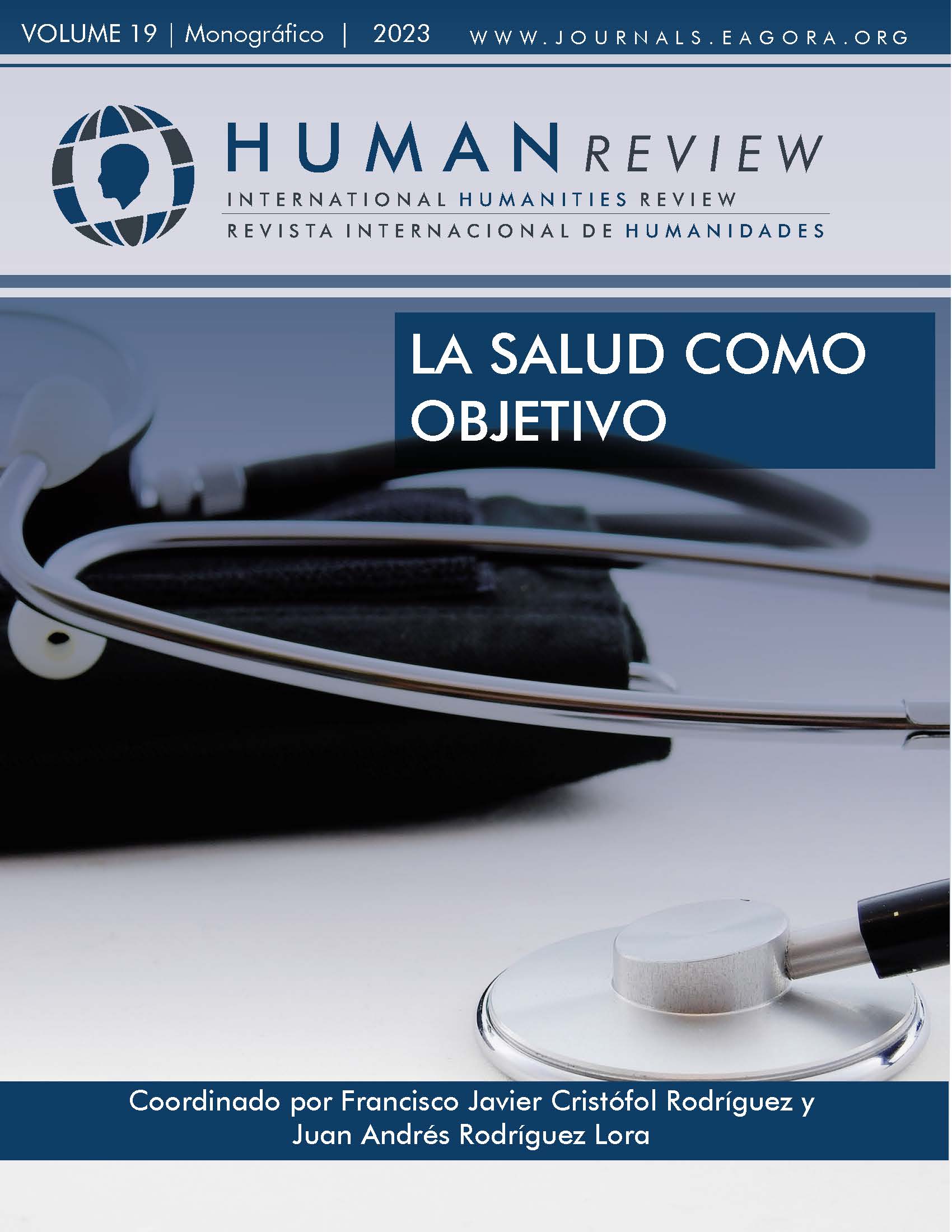La privacidad ante la telemedicina
Aportes de la filosofía de la tecnología a la bioética
DOI:
https://doi.org/10.37467/revhuman.v19.4916Palavras-chave:
Leyes de Kranzberg, Relación clínica, Privacidad, Confidencialidad, Bioética, InnovaciónResumo
La filosofía de la tecnología es una rama reciente de la filosofía en general. Puede aportar herramientas para problemas derivados de aplicaciones tecnológicas recientes, como la telemedicina. Un problema señalado reiteradamente por la bioética lo constituye la privacidad en general, y las modificaciones que pueden introducirse por el cada vez mayor uso de las tecnologías. Comentando propuestas desde la Asociación Médica Mundial y datos contemporáneo derivados de la pandemia de COVID-19, puede reconocerse que la privacidad es una exigencia ética que requiere regularse a través de su implementación política para su adecuada protección legal.
Referências
Asociación Médica Mundial (2015). Declaración de Lisboa de la AMM Sobre los Derechos del Paciente. https://n9.cl/iy8y7
Asociación Médica Mundial (2018). Declaración de la AMM sobre la ética de la telemedicina. https://n9.cl/i4mqw
Asociación Médica Mundial (2020). Declaración de Córdoba de la AMM sobre la Relación Médico-Paciente. https://n9.cl/z2clnp
Asociación Médica Mundial (2022). Declaración sobre la Salud Digital. https://n9.cl/uiog8
Bertolami, C. N. (2006). Why our ethics curricula don’t work. The Journal of the American College of Dentists, 73(2), 35–46. https://doi.org/10.1002/j.0022-0337.2004.68.4.tb03758.x
Bower, J. L., & Christensen, C. M. (1995). Disruptive technologies: catching the wave. Harvard Business Review, 73(1),43-53.
Bragazzi, N. L., & Del Puente, G. (2014). A proposal for including nomophobia in the new DSM-V. Psychology research and behavior management, 7, 155-160. https://doi.org/10.2147/PRBM.S41386
Christensen, C. M. (1997). The innovator’s dilemma: When new technologies cause great firms to fail. Harvard Business School Press.
Comité Internacional de Bioética, & Comisión Mundial de Ética del Conocimiento Científico y la Tecnología. (2020). Declaración sobre el covid-19: consideraciones éticas desde una perspectiva global. https://unesdoc.unesco.org/ark:/48223/pf0000373115_spa
Doraiswamy, S., Abraham, A., Mamtani, R., & Cheema, S. (2020). Use of telehealth during the COVID-19 pandemic: Scoping review. Journal of medical Internet research, 22(12), e24087. https://doi.org/10.2196/24087
Durbin, P. (1976). Are there interesting philosophical issues in technology as distinct from science? An overview of philosophy of technology. PSA: Proceedings of the Biennial Meeting of the Philosophy of Science Association, 1976, 139-152. http://www.jstor.org/stable/192378
Durbin, P. (1998). Advances in philosophy of technology? Comparative perspectives. Society For Philosophy and Technology, 4(1), 6-24. https://doi.org/10.5840/techne19984111
Einthoven, W. (2019). European Heart Journal, 40(37), 3075-3078. https://doi.org/10.1093/eurheartj/ehz663
Erwin, P. (2011). Corporate codes of conduct: the effects of code content and quality on ethical performance. Journal Of Business Ethics, 99(4), 535-548. https://n9.cl/z2i5l
Fernandez-Guerrero, I. (2014). WhatsAppitis. The Lancet, 383(9922), 1040. https://doi.org/10.1016/s0140-6736(14)60519-5
Gershon-Cohen, J., & Cooley, A. G. (1950). Telognosis. Radiology, 55(4), 582-587. https://doi.org/10.1148/55.4.582
Gracia, D. (1992). La relación clínica. Revista Clínica Española, 191(2), 61-63.
Gracia, D. (2003). Ciencia y ética. En D. Gracia, Ética y vida. Estudios de bioética 4. Profesión médica, investigación y justicia sanitaria (1a ed., pp. 59-76). El Búho.
ten Have, H., & Neves, M. D. C. P. (2021). Dictionary of Global Bioethics. Springer.
Ihde, D. (2004). Has the philosophy of technology arrived? A state‐of‐the‐art review. Philosophy Of Science, 71(1), 117-131. https://doi.org/10.1086/381417
Ilyas, A. M., Ast, M., Schaffer, A. A., & Thoder, J. (2007). De quervain tenosynovitis of the wrist. The Journal of the American Academy of Orthopaedic Surgeons, 15(12), 757-764. https://doi.org/10.5435/00124635-200712000-00009
Jalali, M. S., Landman, A., & Gordon, W. J. (2021). Telemedicine, privacy, and information security in the age of COVID-19. Journal of the American Medical Informatics Association: JAMIA, 28(3), 671-672. https://doi.org/10.1093/jamia/ocaa310
Kaplan, B. (2020). Revisiting health information technology ethical, legal, and social issues and evaluation: telehealth/telemedicine and covid-19. International Journal of Medical Informatics, 143, 104239. https://doi.org/10.1016/j.ijmedinf.2020.104239
Kranzberg, M. (1986). Technology and History: “Kranzberg’s Laws”. Technology and Culture, 27(3), 544-560. https://doi.org/10.2307/3105385
Laín Entralgo, P. (1964). La relación médico-enfermo. Historia y teoría. Revista de Occidente.
Muñoz, R. (2018). El número de líneas móviles supera por primera vez a la población mundial. El País. https://n9.cl/llzrq
Norton, S. A., Lindborg, C. E., & Delaplain, C. B. (1993). Consent and privacy in telemedicine. Hawaii medical journal, 52(12), 340-341.
Rivera Salgado, M. I. (2020). El rol de los Comités Hospitalarios de Bioética para orientar la toma de decisiones en contextos de emergencias sanitarias. Gaceta Conbioética, 9(36), 7-12. https://n9.cl/7sj4y
Rubio, O., Cadena, M., Rafat, R., Autet, A., & Morales, C. (2019). Pedagogía de la Bioética. En: Universitat de Vic - Universitat Central de Catalunya. Càtedra de Bioètica. Comunicaciones del I Congreso Internacional de Bioética. (1a ed., pp. 26-30). Fundació Víctor Grífols i Lucas. https://n9.cl/nn472
Satava, R. M. (1995). Virtual reality, telesurgery, and the new world order of medicine. Journal of image guided surgery, 1(1), 12-16. https://n9.cl/myqxo
Winner, L. (1979). Tecnología autónoma: la técnica incontrolada como objeto del pensamiento político. Gustavo Gili.
Winner, L. (2008). La ballena y el reactor: una búsqueda de los límites en la era de la alta tecnología. (2 ed.). Gedisa.
Winner, L. (1993). Upon opening the black box and finding it empty: Social constructivism and the philosophy of technology. Science, Technology, & Human Values, 18(3), 362-378. http://www.jstor.org/stable/689726
Zundel, K. M. (1996). Telemedicine: history, applications, and impact on librarianship. Bulletin of the Medical Library Association, 84(1), 71-79.
Downloads
Publicado
Como Citar
Edição
Seção
Licença
Os autores/as que publicam nesta revista concordam com os seguintes termos:
- Os autores/as terão os direitos morais do trabalho e cederão para a revista os direitos comerciais.
- Um ano após a sua publicação, a versão do editor estará em acesso aberto no site da editora, mas a revista manterá o copyright da obra.
- No caso dos autores desejarem asignar uma licença aberta Creative Commons (CC), poderão a solicitar escrevendo a publishing@eagora.org.









